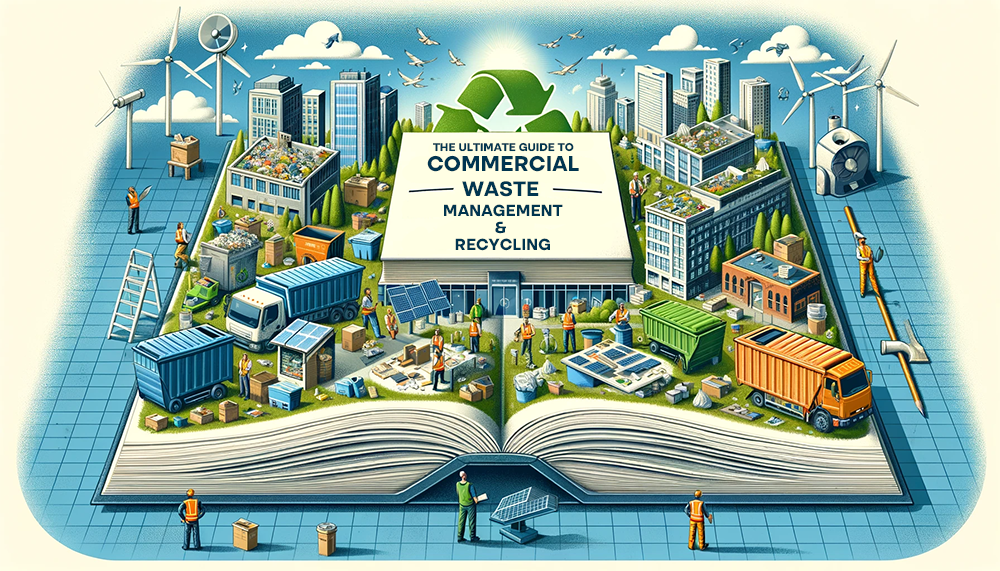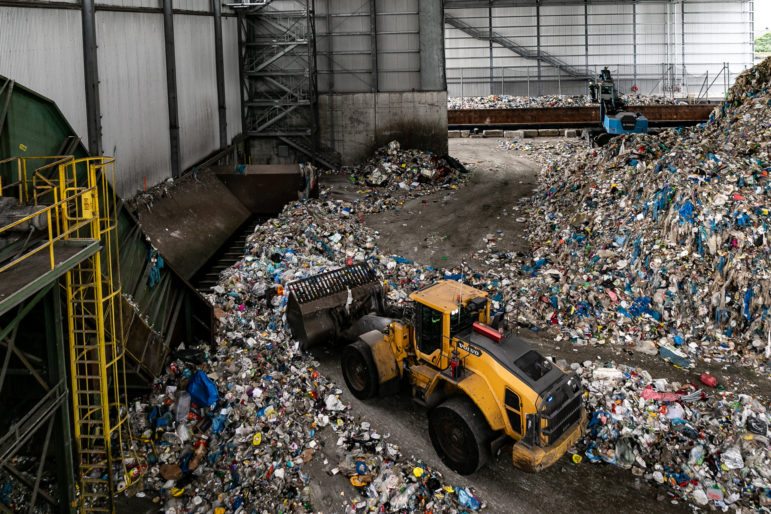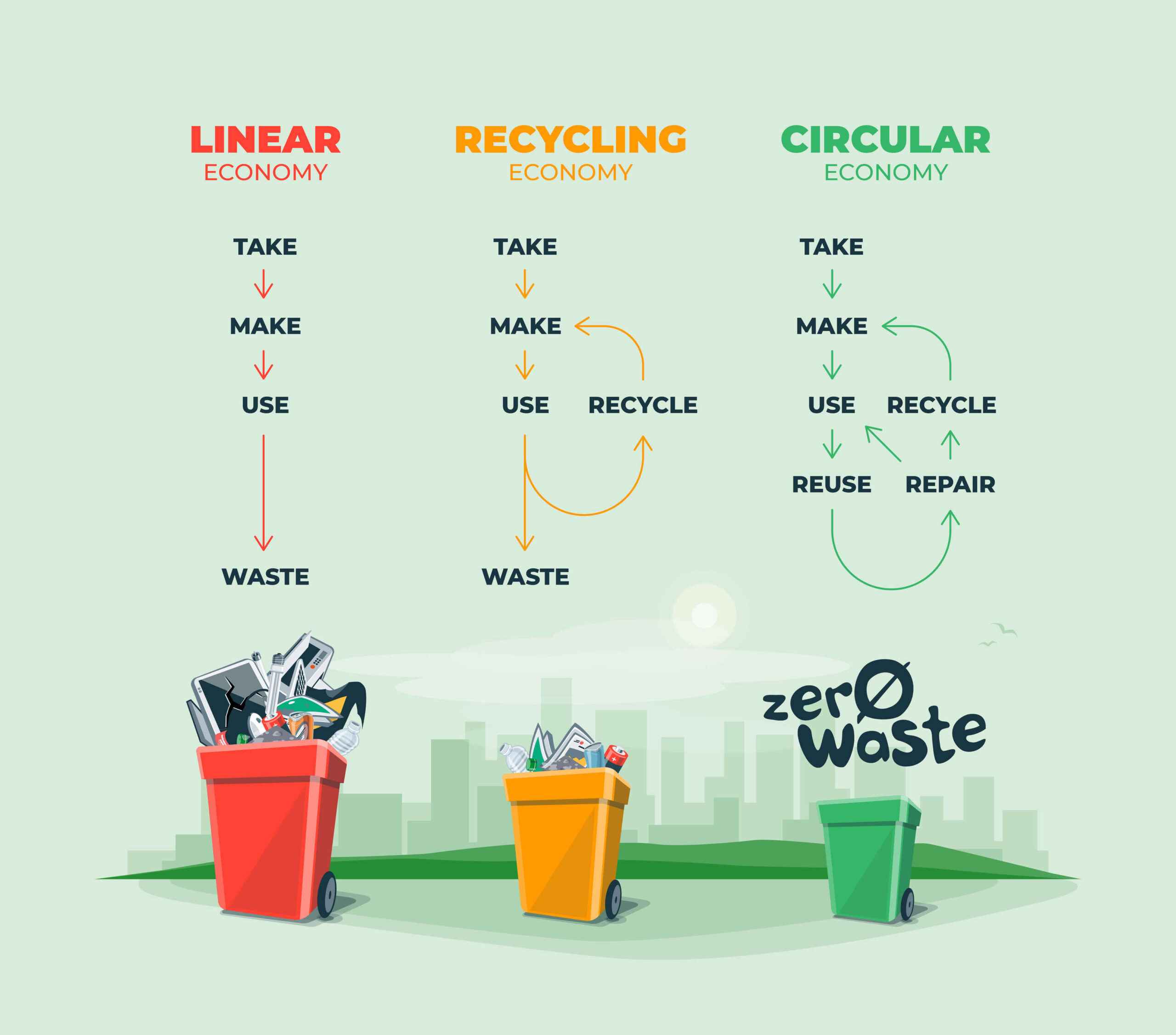Discover the Advantages of Recycling Lives Services for Your Company
Recognizing the Classification and Handling of Different Kinds of Waste
Effective waste administration is essential for ecological sustainability, requiring an extensive understanding of the category and handling of numerous waste types. House waste, commercial spin-offs, unsafe materials, digital refuse, and natural remnants each require distinct methods to ensure safety and minimize eco-friendly damage. Executing proper segregation, therapy, and disposal approaches is vital to mitigate damaging environmental influences and promote source conservation. As an example, the composting of natural waste contrasts greatly with the intricate procedures required to take care of hazardous substances. This diverse technique to squander management emphasizes its intricacy and the important demand for specialized expertise in this domain name.

House Waste
Home waste, encompassing a broad selection of disposed of materials generated from daily living tasks, stands for a significant part of the total waste stream - recycling lives services. This classification consists of organic waste such as food scraps, yard cuttings, and paper items, alongside inorganic products like plastics, steels, and glass. The varied nature of family waste necessitates effective classification and monitoring to mitigate environmental effect and advertise sustainable living methods
Efficient house waste administration starts with partition at the source, helping with recycling, composting, and secure disposal. Organic waste, for circumstances, can be composted to generate nutrient-rich dirt modifications, minimizing land fill problem and improving soil health. Recyclable products, consisting of paper, glass, and certain plastics, can be processed and repurposed, conserving sources and minimizing power consumption related to brand-new material manufacturing.
In addition, hazardous home waste such as batteries, electronic gadgets, and cleansing chemicals needs specialized taking care of to avoid dirt and water contamination. Public awareness campaigns and practical disposal choices play important functions in guaranteeing proper disposal and recycling of these products. By implementing robust waste reduction methods and cultivating community participation, districts can considerably alleviate the environmental impact of house waste.
Hazardous Waste
Industrial waste, a significant factor to global waste generation, encompasses a varied array of materials generated by production, construction, and other industrial activities. Reliable management of industrial waste is critical for reducing ecological impact and promoting lasting techniques.
The handling of hazardous waste normally entails numerous procedures: collection, partition, treatment, and disposal. Collection systems are created to successfully collect waste materials from various resources within a commercial operation. Segregation is vital, as it makes sure recyclable materials are divided from non-recyclable ones, which can be directed in the direction of suitable recycling or disposal networks. Treatment processes, including physical, chemical, and biological methods, are employed to reduce the poisoning, volume, and environmental influence of the waste. Disposal methods like landfilling or incineration are made use of for waste that can not be reused or dealt with.
Embracing approaches such as waste minimization, source recovery, and recycling can significantly minimize the worry of hazardous waste on the atmosphere, adding to even more sustainable industrial methods.
Contaminated Materials

The classification of dangerous waste is generally based on its chemical and physical attributes. Toxic wastes have dangerous substances that can cause damaging wellness effects even at reduced focus. Destructive wastes can damage or ruin living materials and tissues. Combustible wastes can conveniently ignite, posing fire risks, while responsive wastes can cause surges or launch toxic gases upon call with various other substances.
Reliable contaminated materials administration involves numerous essential practices: recognition and segregation of unsafe materials, risk-free transport and storage, and appropriate therapy and disposal. Treatment techniques might consist of chemical neutralization, stabilization, and incineration. Regulative right here compliance is necessary, guided by frameworks such as the Source Conservation and Recovery Act (RCRA) in the USA, which ensures safe and environmentally audio monitoring of contaminated materials.
Electronic Waste
Digital waste, usually abbreviated as e-waste, stands for a growing challenge in waste administration as a result of the rapid obsolescence of innovation. This classification encompasses a broad series of thrown out electronic gadgets, consisting of mobile phones, computer systems, televisions, and household home appliances. The intricacy of e-waste depends on its make-up; these things contain a mix of important materials such as gold and copper, in addition to unsafe substances like lead, mercury, and cadmium.

Regulations and laws, such as the European Union's Waste Electric and Electronic Devices (WEEE) Instruction, objective to advertise responsible e-waste monitoring. These plans mandate makers to facilitate the collection and recycling of electronic items, consequently lowering the burden on garbage dumps and decreasing environmental contamination.
Organic Waste
Organic waste, incorporating biodegradable products such as food scraps, yard trimmings, and agricultural deposits, comprises a significant part of the metropolitan solid waste stream. This more information kind of waste is notable not only for its quantity but additionally for its potential environmental impact otherwise handled properly. Organic waste can decompose anaerobically in landfills, generating methane, a powerful greenhouse gas adding to environment change.
Proper handling of organic waste involves a number of strategies. Additionally, drawing away food waste from land fills via donation programs can alleviate food instability while lessening waste.
Municipalities and organizations are significantly identifying the value of organic waste monitoring. Implementing extensive natural waste reusing programs not only reduces environmental impacts but also aligns with wider sustainability objectives, advertising a circular economic situation where resources are continuously recycled and repurposed.
Final Thought
Reliable waste management and ecological security demand a thorough understanding of the classification and handling of different waste kinds. Implementing proper techniques for each waste type makes certain responsible and safe waste monitoring techniques, inevitably contributing to the protection of ecological communities and public wellness.
Effective waste monitoring is pivotal for environmental sustainability, requiring a thorough understanding of the category and handling of different waste types.Family waste, incorporating a wide array a knockout post of disposed of materials created from day-to-day living activities, represents a significant element of the total waste stream.Industrial waste, a significant factor to worldwide waste generation, incorporates a diverse variety of products generated by production, building and construction, and other commercial activities (recycling lives services).Hazardous waste, an important issue in waste management, consists of materials that pose substantial threats to human wellness and the atmosphere due to their poisonous, corrosive, flammable, or reactive residential properties.Organic waste, encompassing eco-friendly materials such as food scraps, yard trimmings, and agricultural deposits, comprises a substantial part of the local solid waste stream